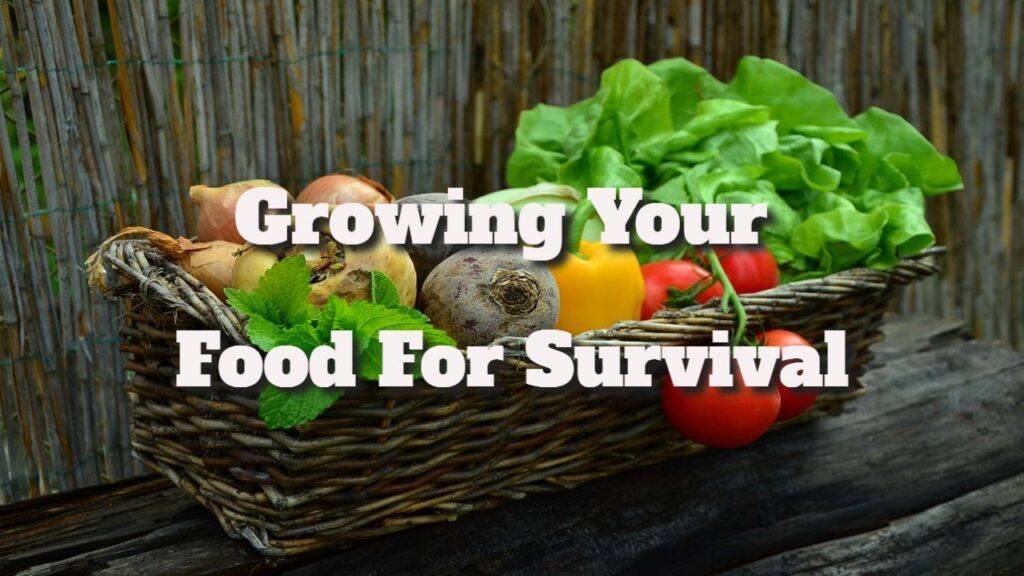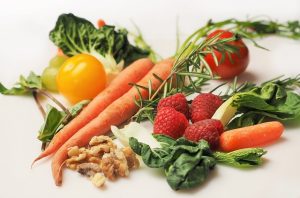
Growing Your Food for Survival – Tips and Practices
Growing your Food for Survival – Tips and Practices
Growing one’s survival food is becoming increasingly popular today. With the rise of natural disasters, global pandemics, and economic uncertainty, more people are turning to self-reliance for survival.
Growing your own food means having access to fresh, nutritious produce even when in distress.
One of the significant benefits of growing your food is having complete control over what you consume.
You may grow organic produce devoid of harmful pesticides and chemicals, ensuring you and your family have healthy and nutritious meals.
Furthermore, growing your food can save you money in the long run by reducing the need to buy expensive grocery store items.
Whether you have a large garden or a little balcony, there are several ways to grow your fruit. Traditional vegetable patches, container gardens, and hydroponics are a few options for any location or budget.
You may prepare yourself and your family for various situations by learning how to grow food.

Understanding the Basics of Food Growing
Choosing the Right Plants
If you want to grow your food, choosing the right plants is crucial. You should choose plants suited to your climate and soil conditions, as well as those that are easy to cultivate and care for.
Tomatoes, lettuce, beans, and peas are some of the most popular crops for beginners. You may get a lot of produce from these crops with little effort.
Soil Preparation and Care
Your plants’ success is directly proportional to the quality of your soil. Before sowing, prepare the soil by removing weeds and debris and adding organic materials such as compost or fertiliser.
This enhances soil structure and fertility while delivering essential plant growth elements. To ensure optimal soil health for plant growth, amend the soil regularly with compost or other organic materials and monitor the pH level during the growing season.
Strategies for watering
Proper watering is essential for healthy plant growth. Overwatering can result in waterlogging and root rot, whilst underwatering causes plants to droop and die. Maintaining a balance and watering the plants regularly but not excessively is vital.
Watering thoroughly once or twice a week is an excellent general rule of thumb, but it can vary depending on the weather and soil conditions. Mulch can also act as a soil moisture retainer, reducing the amount of watering required.
If you grasp the fundamentals of food cultivation, you can start a garden and offer fresh, nutritious food for yourself and your family. With the right plants, proper soil preparation and care, and appropriate watering techniques, you may reap a bountiful harvest while having fun cultivating your food.
Set up your garden.
Garden Design and Layout.
Consider your space and how much light your plants will receive as you design your garden. Select a place that receives at least six hours of sunlight per day. Consider your location’s soil type and water drainage.
Plan your garden based on the space available and the plants you want to grow. Consider the size of the plants when they are growing to ensure they have enough space. A landscape planner can help you with this operation.
Complementary planting
Complementary gardening involves mixing plants that benefit each other. For example, putting marigolds near tomatoes can help prevent pests drawn to them.
When building your garden, think about growing companion plants. Determine which plants function well together and which should be separated. This can improve plant health while reducing the need for insecticides.
Pest Control
Pest management is an essential aspect of gardening. Pest management can be achieved using various methods, including natural predators such as ladybirds and organic insecticides.
Learn about the pests in your area and select an effective pest control solution. Never use more insecticide than is suggested; doing so may harm your plants and the environment.
By adhering to these recommendations, you can successfully construct your garden and cultivate food for survival.
Harvesting and storing food
Harvesting Techniques
When harvesting your produce, you can take a few steps to help your plants thrive. Remove the earth around the plant using a garden fork before plucking up root crops such as carrots and potatoes.
Use a sharp knife or scissors to cut the leaves at the base of leafy plants, such as lettuce and spinach. Gently twist or cut ripe fruits from the plant, such as tomatoes and strawberries.
Preservation methods
Food must be adequately stored after harvesting to ensure its long-term viability.
Canning is one of the most accessible ways to preserve food. This involves boiling the food in a jar to kill all bacteria before sealing it to keep new bacteria out.
Another standard method of preservation is drying. This comprises removing as much moisture as possible from the food by hanging it to dry naturally or using a dehydrator.
Finally, freezing is a great way to keep food for an extended period. Preparing food for freezing is as simple as washing and cutting it before storing it in a container or bag.
Seed Preservation and Storage
If you want to grow your food in the future, you must conserve and store your seeds properly. The first step is to thoroughly dry the seeds before storing them.
Spread them out flat and let them air dry for a few days. When the seeds have dried, please place them in a sealed container and store them in a cold, dry area.
Write the seed variety and harvest date on the container label. This allows you to trace your seeds and ensure they are viable for future sowings.
The post Growing your Food for Survival – Tips and Practices appeared first on Survival Avenue.
The Article Growing Your Food for Survival – Tips and Practices was found on https://limitsofstrategy.com
The Article Growing Your Food for Survival – Tips and Practices First Appeared ON
: https://ad4sc.com











